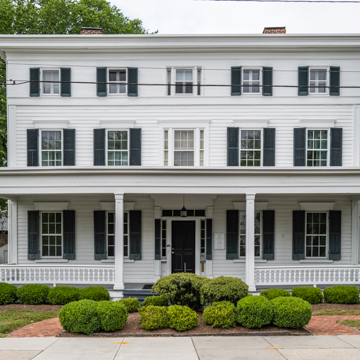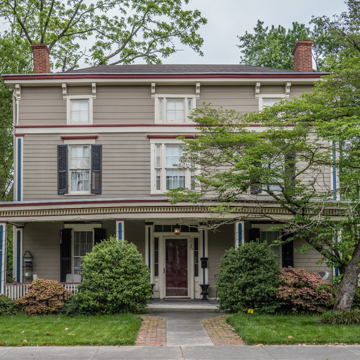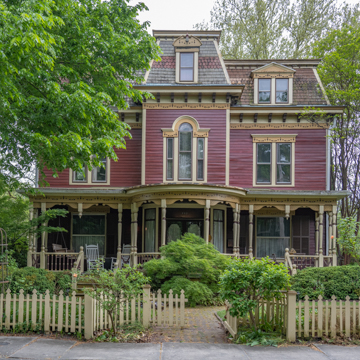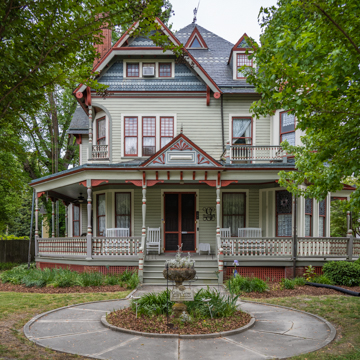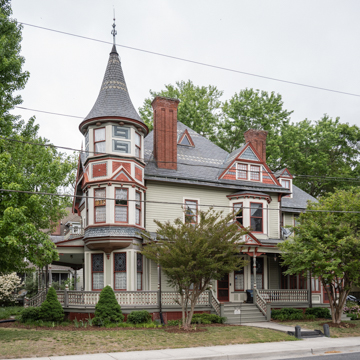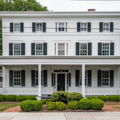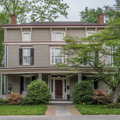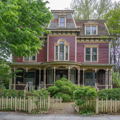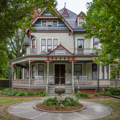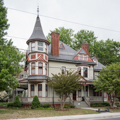Newtown is one of Salisbury’s earliest and most exclusive suburbs. Development began around the turn of the nineteenth century with the division of a 75-acre tract known as Haynie’s Settlement, referred to as New Town by the 1820s. Growth began in earnest after the Civil War and the arrival of the railroad, and that coupled with the industrialization of the 1880s through the 1920s sparked population growth and housing demand. Salisbury was then one of the most prosperous towns on the peninsula, and nowhere is it more evident than in Newtown, with large houses in a range of revival styles. Representative examples include the Greek Revival- and Italianate-influenced house (c. 1850; 325 N. Division Street) built for physician Cathell Humphreys and his wife Isabella Huston of Poplar Hill and the similarly styled Park Hall (1856; 115 Broad Street) built for his brother, Humphrey Humphreys. Also notable are the Queen Anne Gillis-Grier House (1887–1888; 401 N. Division) and the late Second Empire house (1897–1898; 200 E. William Street) built for Thomas Cooper, editor of the Salisbury Advertiser.
You are here
NEWTOWN HISTORIC DISTRICT
If SAH Archipedia has been useful to you, please consider supporting it.
SAH Archipedia tells the story of the United States through its buildings, landscapes, and cities. This freely available resource empowers the public with authoritative knowledge that deepens their understanding and appreciation of the built environment. But the Society of Architectural Historians, which created SAH Archipedia with University of Virginia Press, needs your support to maintain the high-caliber research, writing, photography, cartography, editing, design, and programming that make SAH Archipedia a trusted online resource available to all who value the history of place, heritage tourism, and learning.











